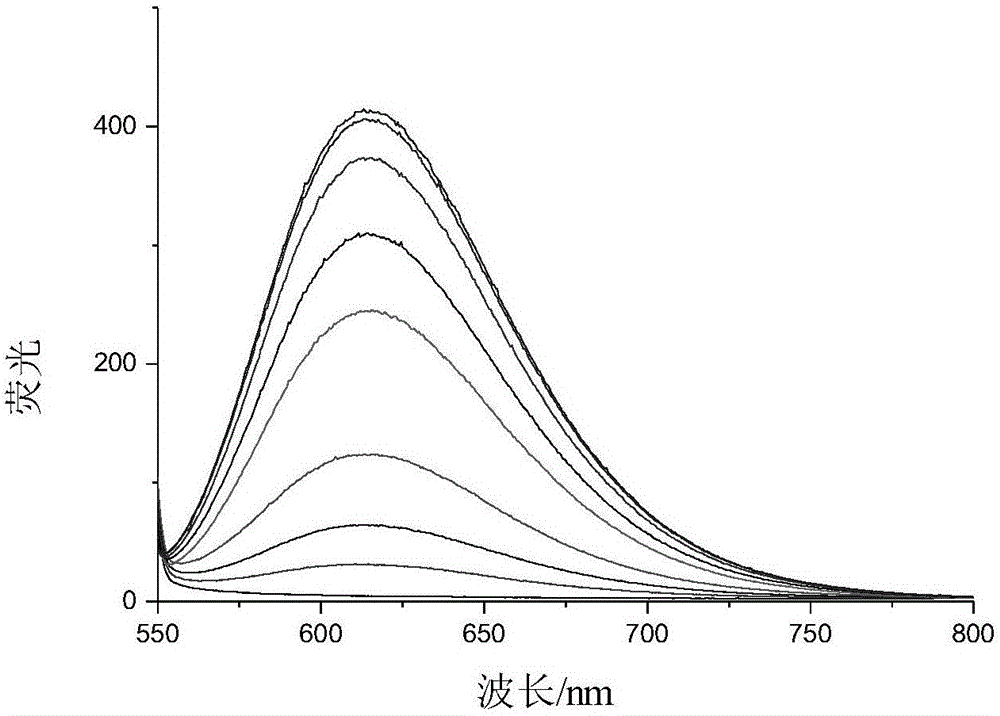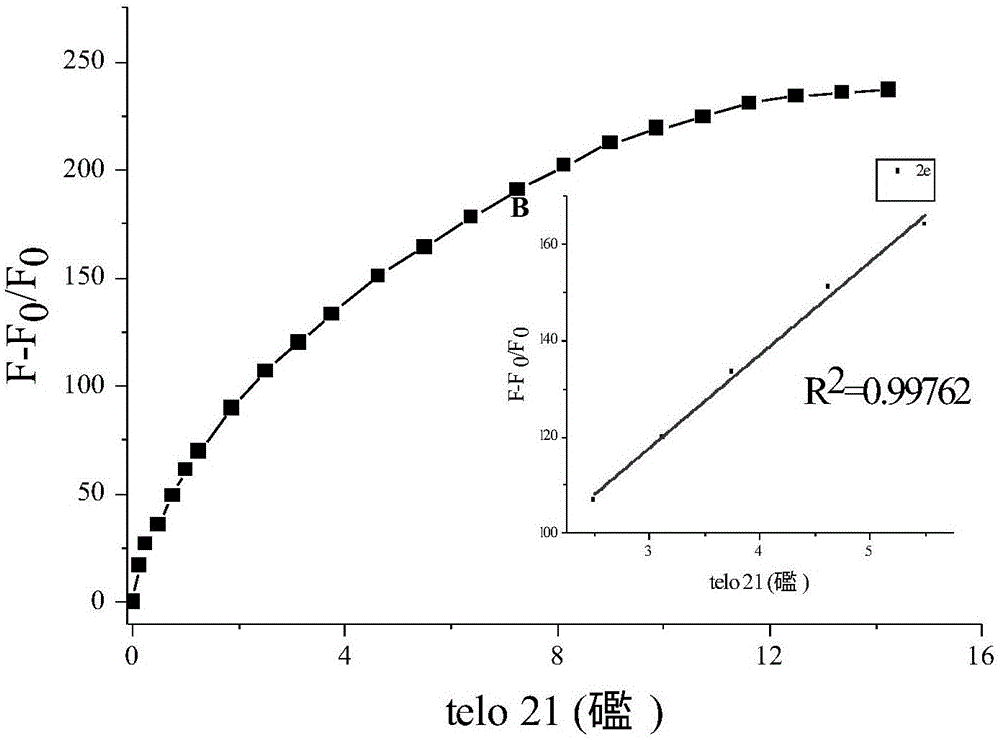Fluorescent probe and preparation method thereof
A fluorescent probe, selected technology, applied in fluorescence/phosphorescence, chemical instruments and methods, luminescent materials, etc., can solve the problems of rigidity and low selectivity of G-quadruplex
- Summary
- Abstract
- Description
- Claims
- Application Information
AI Technical Summary
Problems solved by technology
Method used
Image
Examples
preparation example Construction
[0059] The present invention also provides a method for preparing the above-mentioned fluorescent probe, comprising:
[0060] The compound shown in formula (II) is reacted with aromatic aldehyde to obtain the fluorescent probe shown in formula (I);
[0061]
[0062] Among them, R 1 with R 2 Each is independently selected from H or an aromatic vinyl group, and at least one is an aromatic vinyl group;
[0063] R 3 selected from H, F, Cl, Br, OH, OCH 3 , N(CH 3 ) 2 Or C1~C6 alkyl;
[0064] R 4 Alkyl group selected from C1~C6;
[0065] R 12 with R 13 each independently selected from H or CH 3 , and not H at the same time.
[0066] where the R 1 ~R 11 All are the same as above, and will not be repeated here.
[0067] According to the present invention, the compound described in the formula (II) is preferably prepared according to the following method:
[0068] The compound shown in formula (III) is reacted with alkyl iodide to obtain the compound shown in formula...
Embodiment 1
[0087] Embodiment 1: the synthesis of compound 1a
[0088] Weigh 0.2g (1.400mmol) of 2-dimethylquinaldine into a 25ml round-bottomed flask, add about 1.2g of methyl iodide and 5.0ml of sulfolane, and heat the mixture to 70°C for 6 hours of reaction After cooling, shake after adding anhydrous diethyl ether, suction filter, wash the solid with anhydrous diethyl ether, weigh after vacuum-drying, thin-layer chromatography preliminarily shows that there is no by-product, obtains 0.355g pure product 1a, chemical structure formula is as follows, yield was 89.0%.
[0089]
[0090] Utilize nuclear magnetic resonance to analyze the compound 1a obtained in embodiment 1, obtain its proton nuclear magnetic resonance spectrum result: 1 H NMR (400MHz, DMSO) δ9.11(d, J=8.5Hz, 1H), 8.60(d, J=9.0Hz, 1H), 8.38(t, J=15.7Hz, 1H), 8.23(t, J =7.5Hz, 1H), 8.13(d, J=8.5Hz, 1H), 7.99(t, J=7.5Hz, 1H), 4.46(s, 3H), 3.09(s, 3H).
[0091] Compound 1a obtained in Example 1 is analyzed by mass spectromet...
Embodiment 2
[0092] Embodiment 2: the synthesis of compound 1b
[0093] The preparation method of this example is the same as that of Example 1 except that 4-dimethylquinaldine is used instead of 2-dimethylquinaldine. It is a brown solid with the following chemical structure and a yield of 91.7%.
[0094]
[0095] Utilize nuclear magnetic resonance to analyze the compound 1b that obtains in embodiment 2, obtain its proton nuclear magnetic resonance spectrum result: 1 H NMR (400MHz, DMSO) δ9.38(d, J=6.0Hz, 1H), 8.53(d, J=8.4Hz, 1H), 8.49(d, J=8.9Hz, 1H), 8.27(t, J =7.9Hz, 1H), 8.07(t, J=6.3Hz, 2H), 4.59(s, 3H), 3.00(s, 3H).
[0096] The compound 1b obtained in Example 2 is analyzed by a mass spectrometer, and its mass spectrometry result is obtained: ESI-MS m / z: 158.2[M+H] + .
PUM
 Login to View More
Login to View More Abstract
Description
Claims
Application Information
 Login to View More
Login to View More - R&D
- Intellectual Property
- Life Sciences
- Materials
- Tech Scout
- Unparalleled Data Quality
- Higher Quality Content
- 60% Fewer Hallucinations
Browse by: Latest US Patents, China's latest patents, Technical Efficacy Thesaurus, Application Domain, Technology Topic, Popular Technical Reports.
© 2025 PatSnap. All rights reserved.Legal|Privacy policy|Modern Slavery Act Transparency Statement|Sitemap|About US| Contact US: help@patsnap.com



